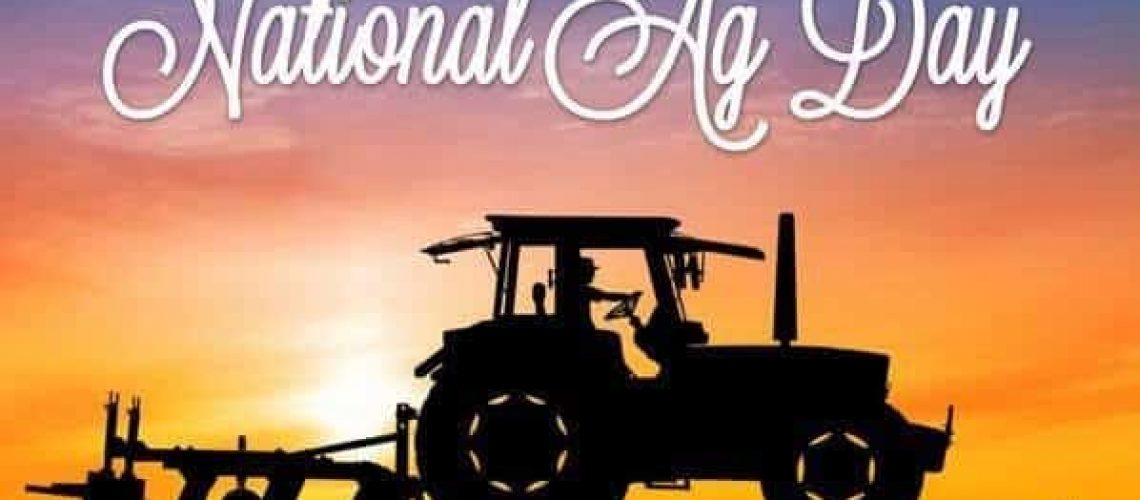Today is National Agriculture Day; a day to stop and consider where your food and fibre comes from, and appreciate the incredibly diverse and innovative industry agriculture is. Agriculture plays a unique role in our society and is a major economic driver and the lifeblood to our rural communities. It is an industry underpinned by innovative individuals who run their businesses in an increasingly complex and challenging environment.
Agriculture around the world is going through a major digital and employment revolution and Western Australia is leading the charge. If we go back a century ago, over half of all Western Australian’s were connected to the land in some form or another. From the Kings in Grass Castles in the far north, to the solider and group settlement schemes in the Wheatbelt and South West, pioneering families were building the farms and pastoral properties that today have become world leading agri-businesses.
Our state’s diverse climate and soils attracted these pioneering men and women to push the boundaries of agriculture to grow a range of products from the traditional wheat, sheep, and cattle; offering unique opportunities to prove our innovation, creation and resilience. Now, 100 years on, WA produces an incredibly diverse range of products, from chia in the Kimberley, grapefruit in the Gascoyne, wagyu in the Wheatbelt and Semillon in the South West.
Today the number of these pioneering farmers, horticulturalists and pastoralists has shrunk dramatically from the tens of thousands to less than 6000. Our 300 pastoral station holders, 400 poultry, pig and dairy producers, 1000 horticultural and grape growers and 4500 grain farmers produce around $8.5 billion of over 1000 different types of world class produce. We grow 10 million tonnes of wheat; enough to keep 100 million people around the globe sustained, down to 10 tonnes of truffles enough to keep the world best restaurants asking for more.
Western Australia produces one of the world’s largest ranges of food and fibre within a single state, as we farm from the sub tropics in the north to the cool temperate of the south. This is all thanks to the entrepreneurial and innovative methods our farmers have adopted; quickly picking up each new generation of technology which has allowed our farms to grow rapidly in size to become some of the largest and most productive in the world.
This rapid pace of change has made Western Australia agriculture one of the most diverse and exciting industries to be involved with. As the physical labour requirements of farming has diminished over the decades, driven by the move from the horse in horse power to diesel power and technology, the work has become less laborious and more intellectual. As a result we have seen our ability to produce more from each hectare, a result of the introduction of fertilisers in the 1930s, chemicals in the 1970s and digital technology in the 1990s. These leaps in technology have seen a growing demand for clever brains to replace strong hands which has led to a rapidly changing face of the people working to make our farms work.
Today’s farmers are continuing to race to adopt the next generation in new ag technology which is being driven by the digital revolution we see in our daily lives through smart phones and apps. This new way of farming is creating opportunities for new careers in agriculture from electronic technicians and IT specialists through to animal scientists and agronomists who are linking into drones and electronic ear tags to track what’s growing where.
These changes have presented huge opportunities for young men and women interested in science, business and technology to embark on interesting and challenging careers in agriculture. Agriculture is a place to work for women; this is a revolution in itself, as the old school image of tough men working hard physically is replaced by intelligent women working smart. Since 2003 more women than men have been putting agricultural science as their preferred degree well in front of the other Science and Technology courses which remain dominated by men.
Today’s graduates are pushing the boundaries with GPS mapping technology and complex data analysis, software feeding into farm agronomy, soil, water and budgeting driving farm decision making. The digital revolution on farm has opened up opportunities for a new generation of both men and women to work as researchers, farm consultants, and farm managers where the ability to think and constantly change is key to producing the outstanding wine, wagyu, wheat and watermelon that our international customers seek from us.
Farmers are the reason you enjoy safe, nutritious produce all year round. Whether it’s helping to feed and clothe a growing global population; protecting our environment; creating jobs in remote communities; or donating to food relief. Australia’s farm sector is vital to the Australian’s livelihoods and there is an incredible amount of innovation and hard work that goes on behind that capsicum sitting in the market stall or the beef in the refrigerator.
So today, on National Agriculture Day, we ask you to stop and consider how important agriculture is and celebrate our hard working farmers who put food on your table and clothes on your back, day in day out.
Tony York
WAFARMERS PRESIDENT











